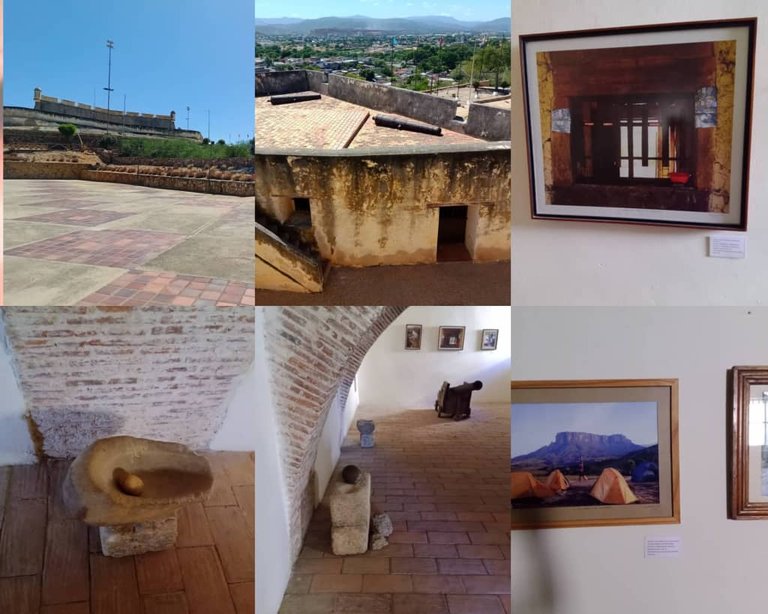
Hello, Hello fellow travelers, it is a pleasure to greet you and share a new adventure. On this occasion we continue in the San Antonio de la Eminencia castle, visiting the prisons, like any fortress, in addition to its upper floors where the rooms, surveillance boxes, among other areas, were located. The castle had prisons where they sent people who broke the law, deserted from the army, or deserved punishment. The prisons are located in the lower part of the Castle, very close to the arch that connects the lower floor with the upper floor, the arch is made of brick and is approximately three hundred years old, the wall is thick and you can see the bridge built in later years, on the right side of the staircase that leads to the upper floor is the prison area, as you go up you can see the window with iron bars and the black door, according to the guide's information it had an approximate thickness of twenty centimeters and was made of wood, but due to the effects of the water and the sun and given its age it was replaced by an iron one, it was a totally dark space where the prisoner had no notion of day and night, to provide a better service to tourists and visitors, some windows were added at strategic points that allow sunlight to enter and appreciate the different works and sculptures found in this area.
rom the upper floor we have a complete view of the prisons, on the roof that is covered with bricks (caico), there are some cannons, this roof in turn is a space on the upper floor of the Castle that offers a beautiful view of the city and the surroundings, if we go further up after crossing the bridge we see the door of the prisons, the main window and the side staircase, in this place the former president José Antonio Páez was imprisoned, after finishing his sentence he traveled out of Venezuela to the city of New York where he later died. I invite you to visit these spaces that formerly served as prisons and today exhibit works by several national and local artists. On the day of my visit there was an exhibition of photographs by a prominent artist.
Hola, Hola amigos viajeros es un placer saludarles y compartir una nueva aventura en esta ocasión continuamos en el castillo San Antonio de la eminencia visitando las prisiones, como toda fortaleza además de sus pisos superiores donde se ubicaban las habitaciones, casillas de vigilancias, entre otras áreas, el castillo tenía prisiones donde enviaban a las personas que incumplían la ley, desertaban del ejército, o merecían un castigo, las prisiones encuentran en la parte baja del Castillo, muy cerca del arco que une al piso inferior con el piso superior, el arco está hecho de ladrillo y tiene aproximadamente trescientos años, la pared es gruesa y se aprecia el puente construido en los años posteriores, al lado derecho de la escalera que conduce al piso suerior se encuentra el área de las prisiones, mientras subes se ve la ventana con barrotes de hierro y la puerta de color negro, según la información del guía tenía un grosor aproximado de veinte centímetros y era de madera, pero por los efectos del agua y el sol y dada su antigüedad fue sustituida por una de hierro, era un espacio totalmente oscuro donde el prisionero no tenía noción del día y la noche; para brindar un mejor servicio a los turistas y visitantes se agregaron algunas ventanas en puntos estratégicos que permiten la entrada de la luz solar y apreciar las diferentes obras y esculturas que se encuentran en esta área.
Desde el piso superior tenemos una vista completa de las prisiones, en el techo que está cubierto con ladrilos (caico), se encuentran algunos cañones, este techo a su vez es un espacio del piso superior del Castillo que ofrece una hermosa vista de la ciudad y el entorno, si avanzamos más arriba luego de cruzar el puente vemos la puerta de las prisiones, la ventana principal y la escalera lateral, en este lugar estuvo preso el expresidente José Antonio Páez, luego de tcumplir su condena viajó fuera de Venezuela a la ciudad de Nueva York donde falleció posteriormente, les invito a recorrer estos espacios que antiguamente sirvieron como prisiones y hoy exhiben obras devarios artistas nacionales y locales, el día de mi visita había una exposición de fotografías de un destacado artista.
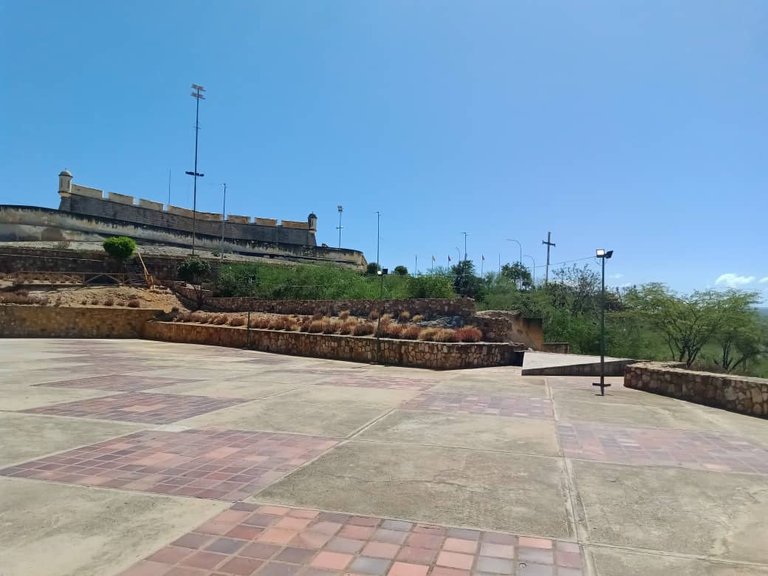
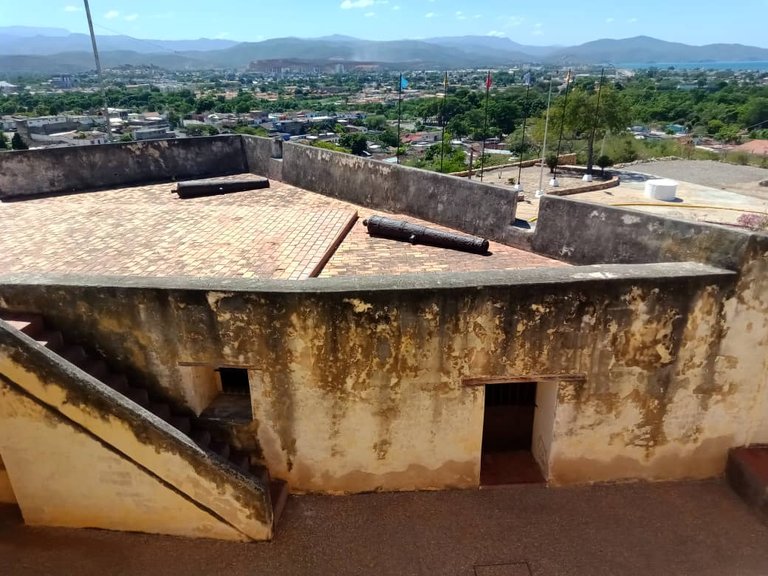
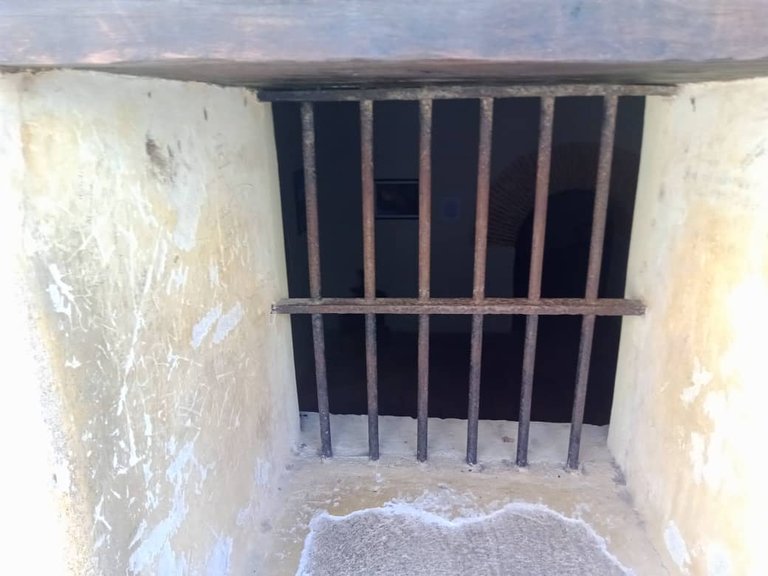
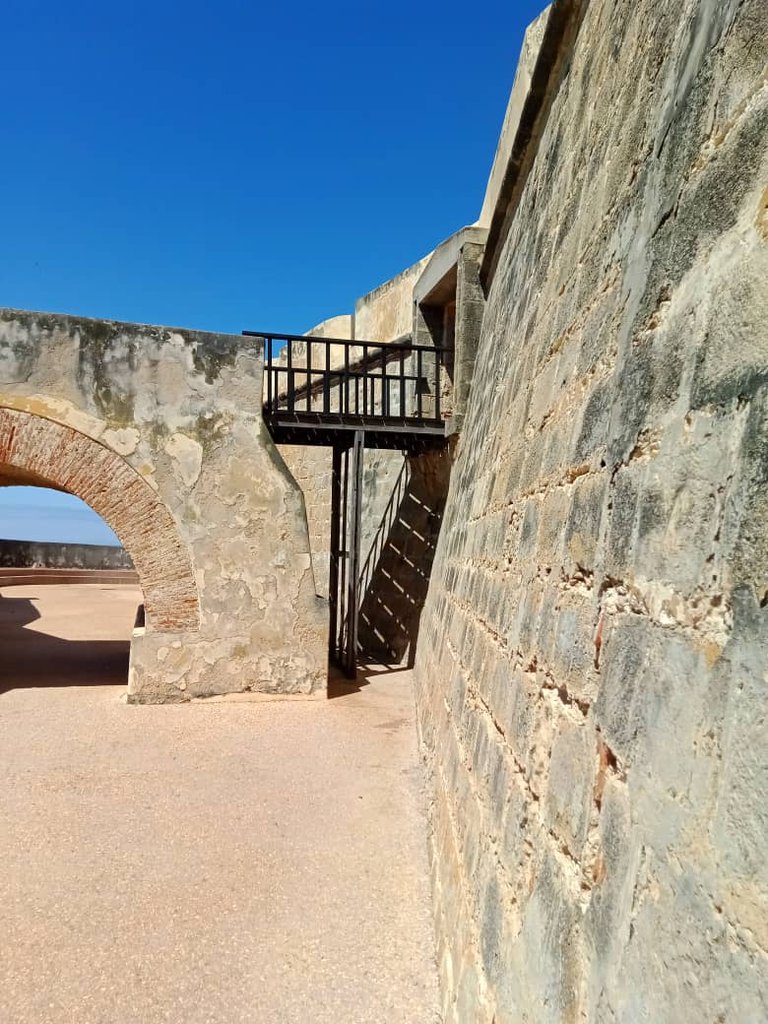
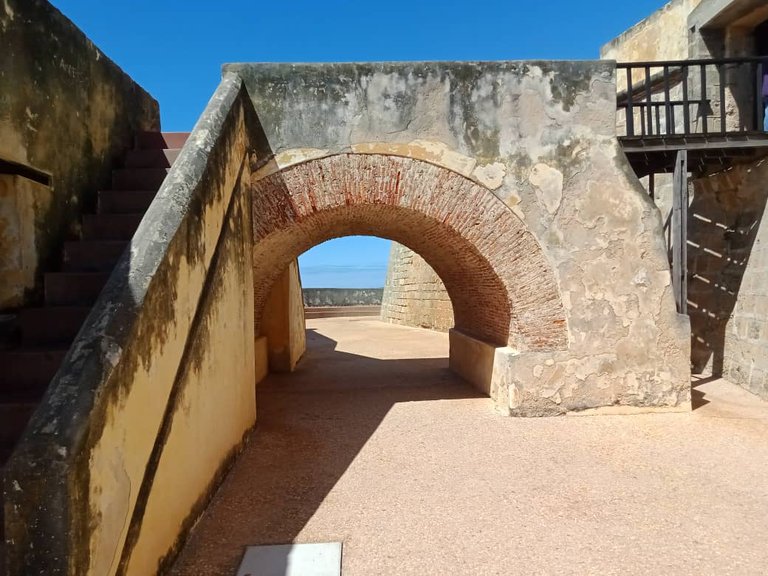
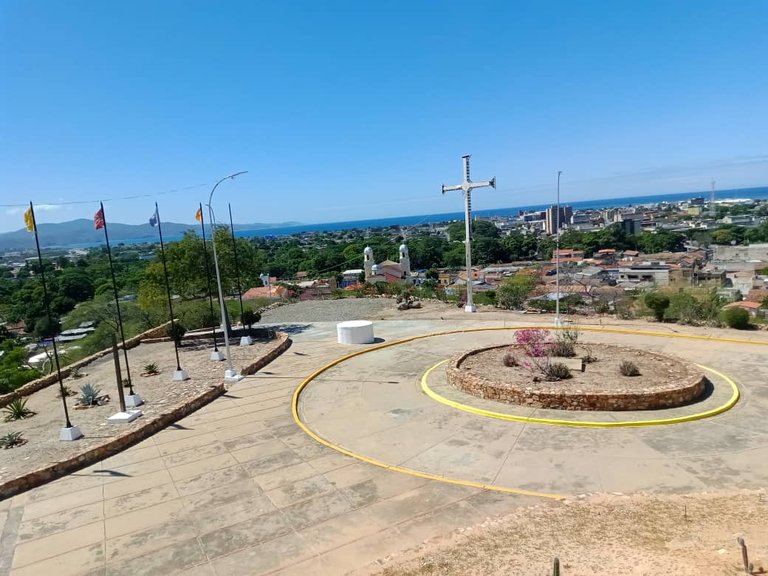
Upon crossing the door we find a small room where the guest book is located, a wooden coat rack that dates back to the 18th century and a series of black and white photographs that show the Cumaná of before, in them we can see the Santa Inés church, a complete view of the San Antonio de la Eminencia castle and the Santa María de la Cabeza castle, which is located next to the aforementioned church, also a historical review of the Castle and the city of Cumaná, at the top of the writing there is a photo in the which you can see the rooms of the castle at the top (these were destroyed by an earthquake), in the next photo you can see the city of Cumana in 1945, then an old theater of the city that was demolished and in its place the Metropolitan Cathedral of Cumaná was built, you can also see a wide view of the sea, according to the guide's information, it came very close to the Castle but due to the continuous earthquakes it moved further away, then we found an arch, this one passage to the prison area and the series of exhibitions of photos of the artist and utensils of the time.
Al cruzar la puerta encontramos una pequeña sala en esta se ubica el libro de firmas, un perchero de madera que data del sioglo XVIII y una serie de fotografías en blanco y negro que muestran la Cumaná de antes, en ellas se observa la iglesia Santa Inés, una vista completa del castillo San Antonio de la Eminencia y el castillo Santa María de la Cabeza, que se ubica al lado de la iglesia antes mencionada, también una reseña histórica del Castillo y la ciudad de Cumaná, en la parte superior del escrito hay una foto en la cual se aprecian las habitaciones del castillo en la parte superior ( estas fueron derstruidas por un terremoto), en la siguiente foto se obsreva la ciudad de Cumana en el año 1945, luego un antiguo teatro de la ciudad que fue demolido y en su lugar se construyó la catedral Metropolitana de Cumaná, se aprecia además una amplia vista del mar, según información del guía este llegaba muy cerca del Castillo pero debido a los continuos terremotos se fue alejando, luego nos conseguimos con un arco, este da paso al área de las prisiones y la serie de exhibiciones de fotos del artista y utensilios de la época.
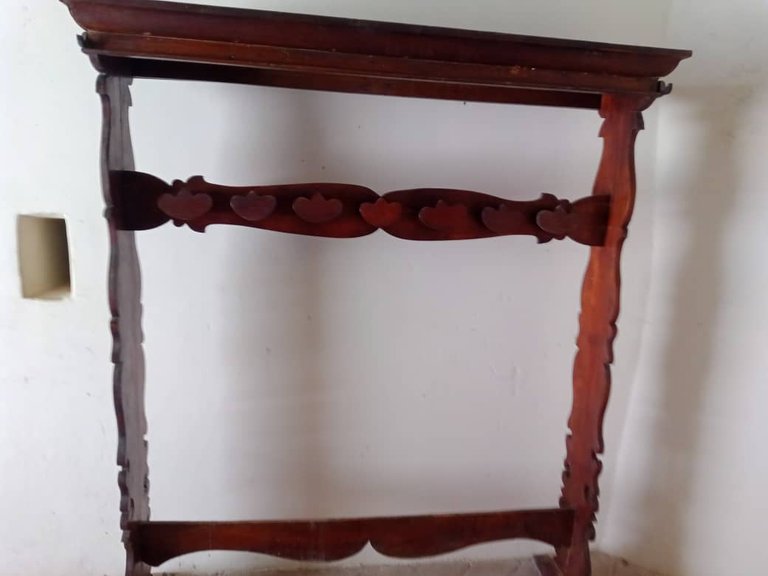
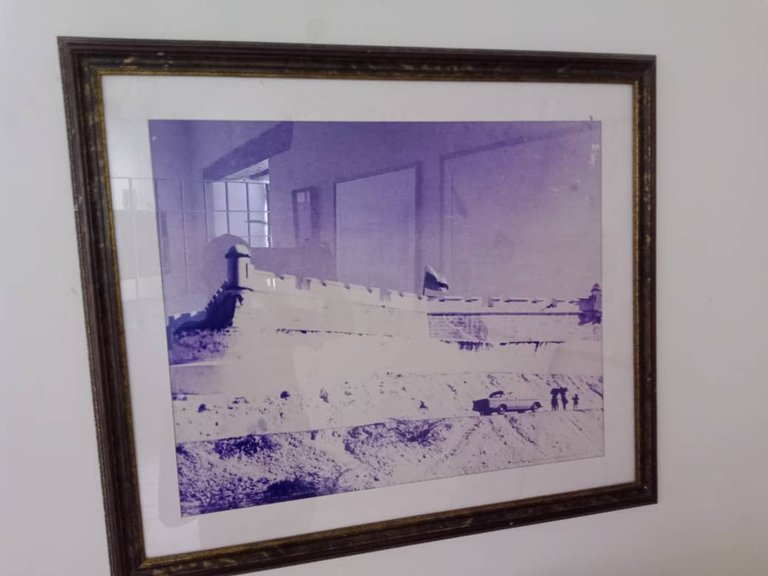
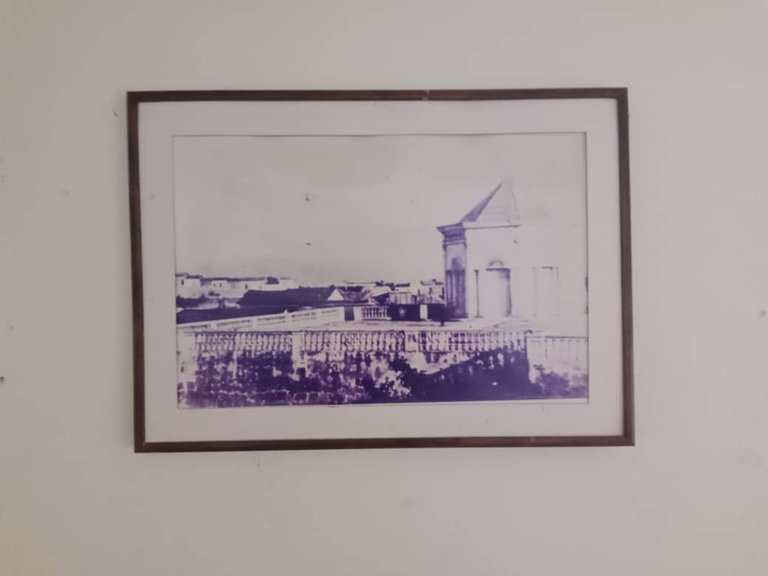
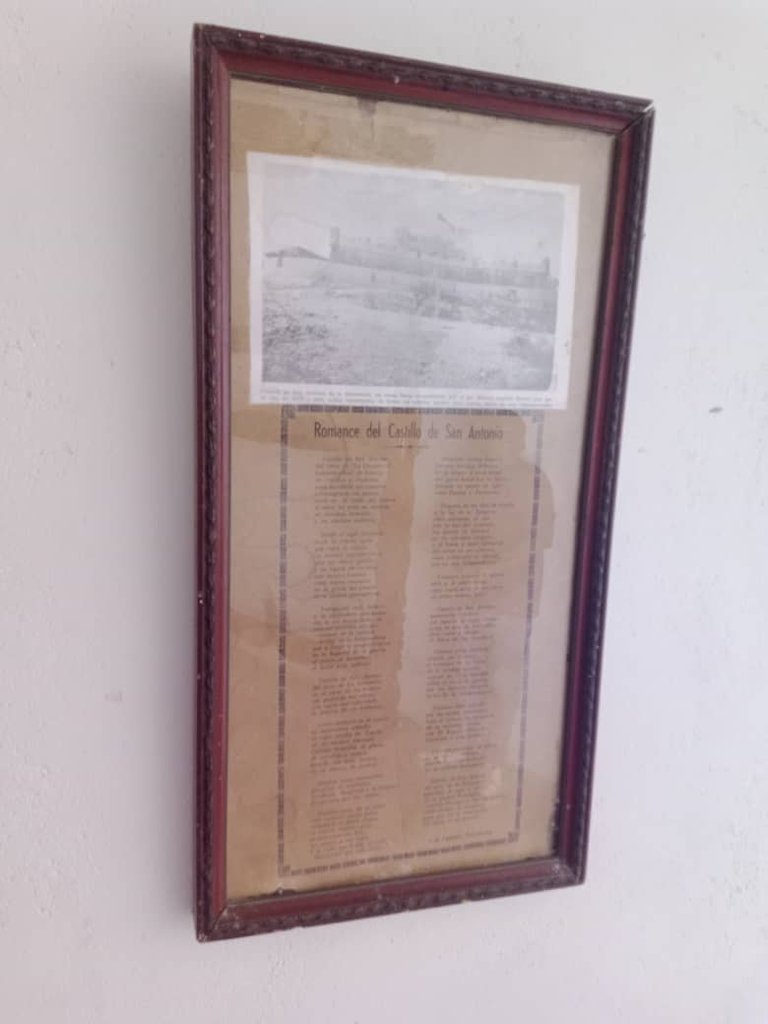
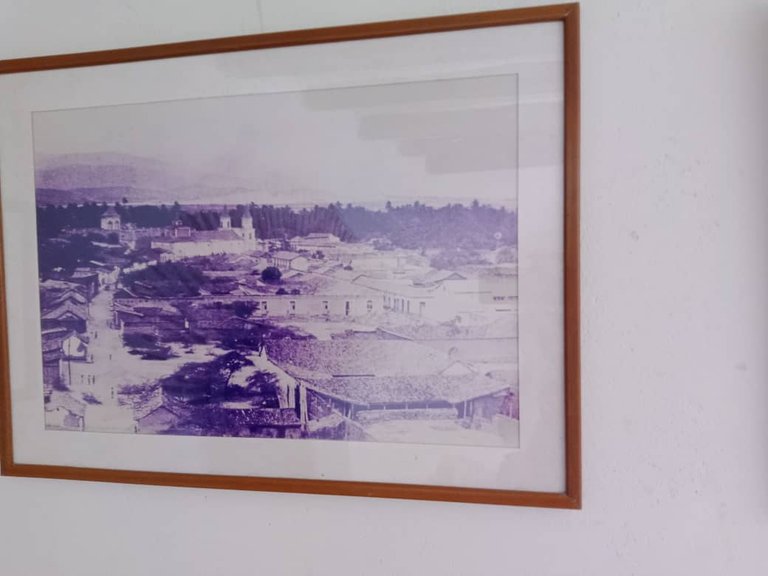
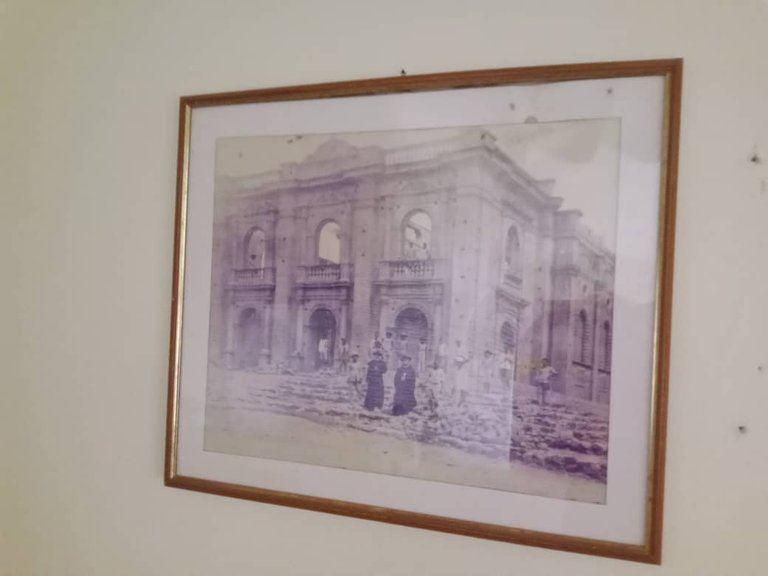
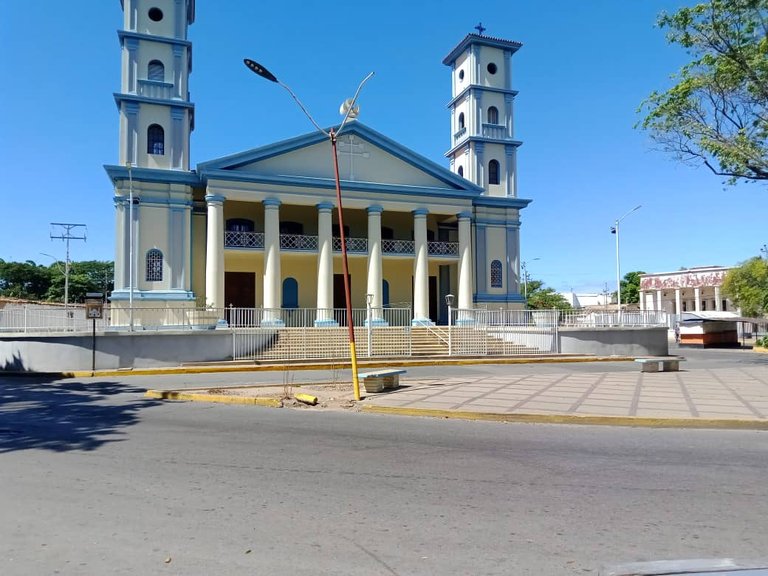
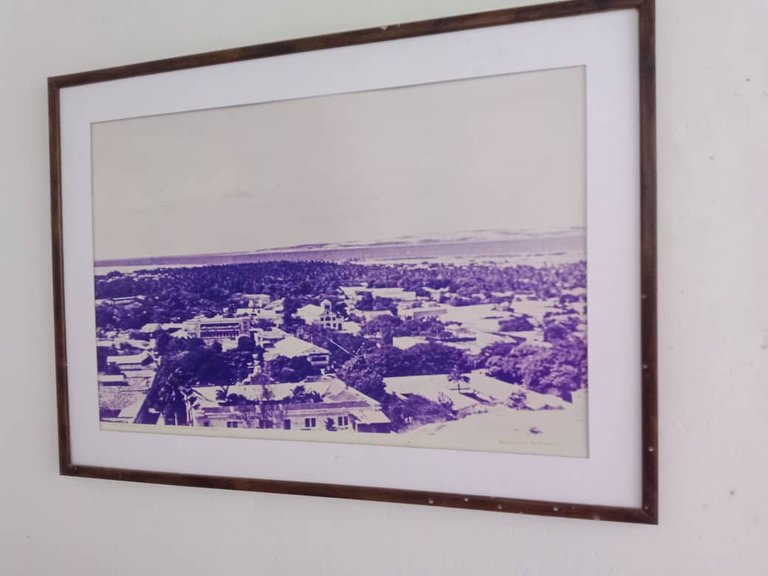
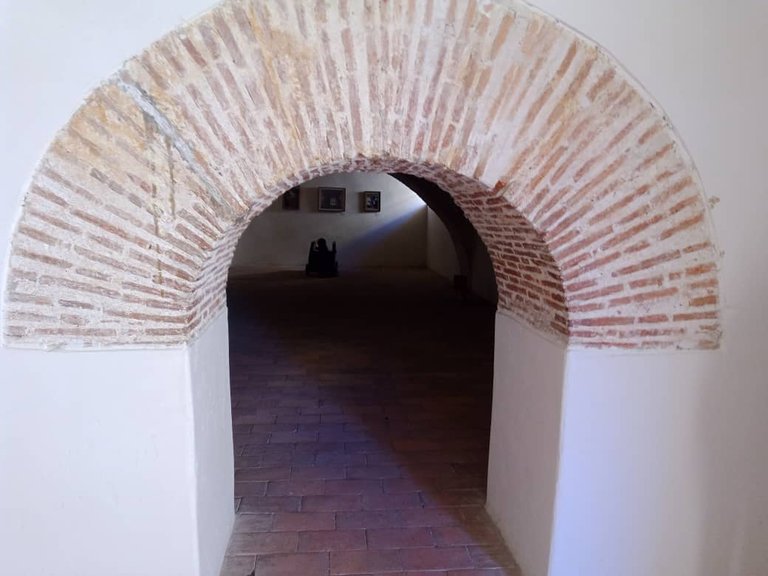
This area has two arches, they are original and similar to the one on the outside that connects the prisons with the upper floor, these are smaller and are called semicircular arches, they are made with brick and joined with the calicanto mixture; At the entrance to the first arch you can read the name of the artist who created this beautiful photographic exhibition; Sebastián Fernández Villar, in the photos we see a beautiful iguana among several bushes, then a blue triangle with a beautiful sky in the background and fluffy clouds, then a series of photographs of Cumaná, once beautiful natural landscapes that are what the artist likes the most, also a young man in rural work, then a river, again the young man trying to cross the river, the iguana closer and one of the photos that caught my attention the most was the one from the window of the Castillo, in this image you can see the thickness of the wood that the window and the walls had, the frames on both sides are made of wood, at the top it is wider and you can see the bars in the background, on the bars there is a red cup, the walls look brown and beige, this photo definitely captured the colors of the materials and the texture, it looks very realistic, continuing with the series of photographs you can see a young man camping in the mountain and several tents, again we see the iguana with its beautiful gradient green color.
Esta área cuenta con dos arcos, son originales y similares al de la parte externa que conecta las prisiones con el piso superior, estos son más pequeños y se llaman arcos de medio punto, están hechos con ladrillo y unidos con la mezcla calicanto; en la entrada del primer arco se lee el nombre del artista que creó esta esta hermosa exposición fotográfica; Sebastián Fernández Villar, en las fotos apreciamos una hermosa iguana entre varios arbustos luego, un triángulo de color azul con un hermoso cielo de fondo y esponjosas nubes, luego una serie de fotografías de la Cumaná antaño hermosos paisajes naturales que son los que más le gustan al artista, también un joven en las labores rurales, luego un río, nuevamente el joven intentando cruzar el río, la iguana más de cerca y una de las fotos que más llamó mi atención fue la de la ventana del Castillo, en esta sea se observa el grosor de la madera que tenía la ventana y las paredes, los marcos en ambos lados son de madera, en la parte superior es más más ancho y se ven las rejas al fondo, en la reja hay una taza de color rojo, las paredes se ven de color marrón y beige, esta foto definitivamernte captó los colores de los materiales y la textura, se ve muy realista, continuando con la serie de fotografías se aprecia un joven acampando en la montaña y varias carpas, nuevamente vemos la iguana con su hermoso color verde degradado.
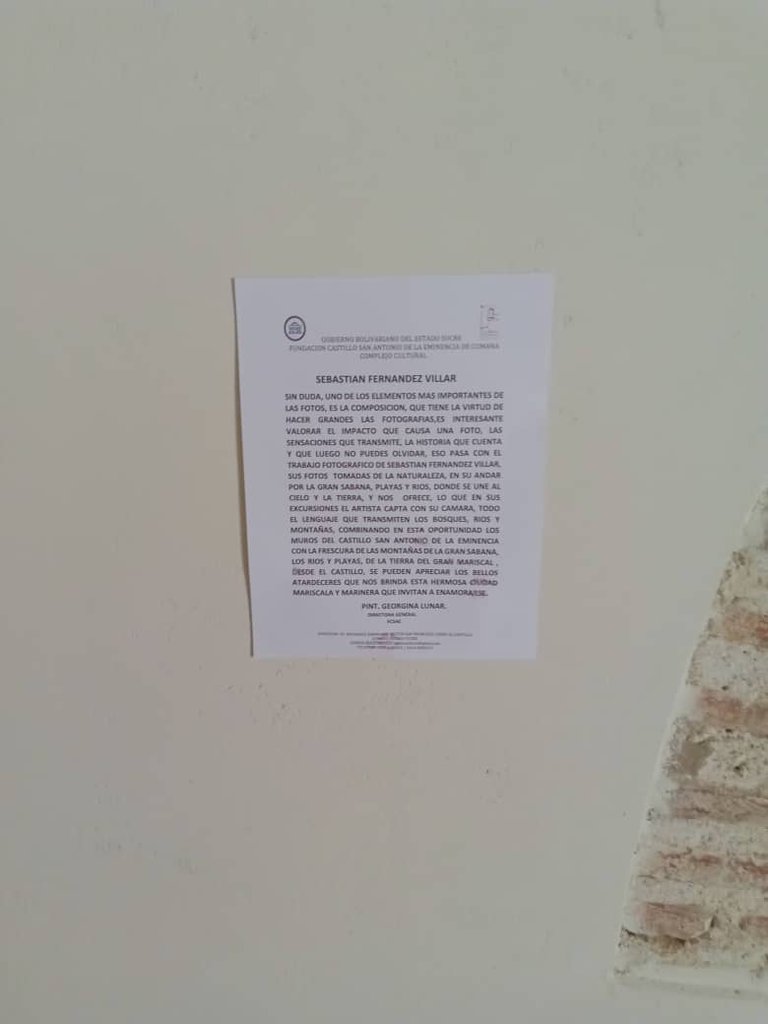
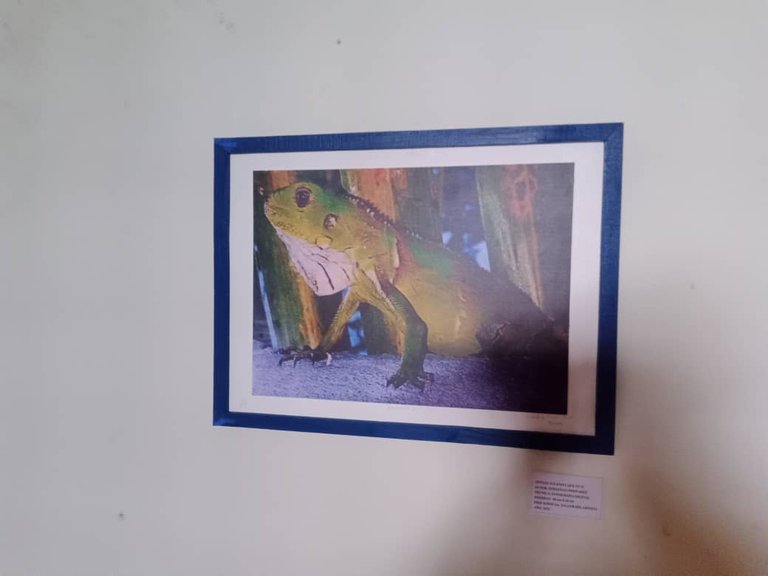
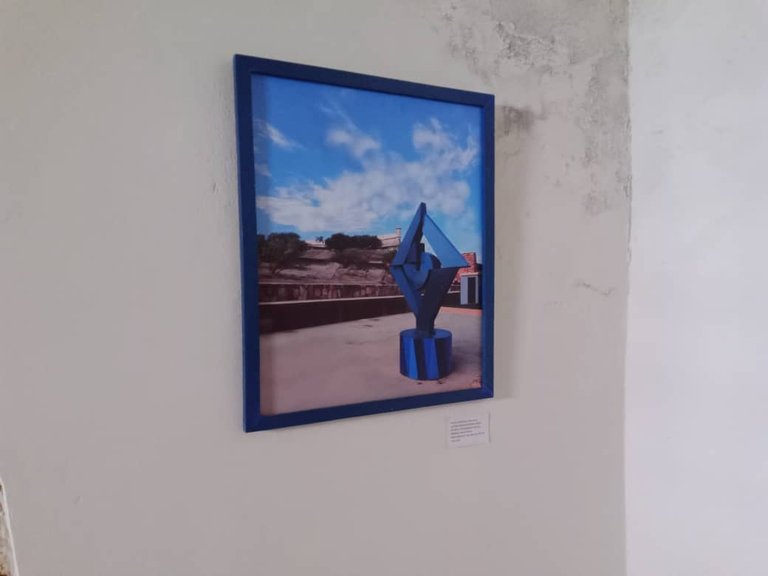
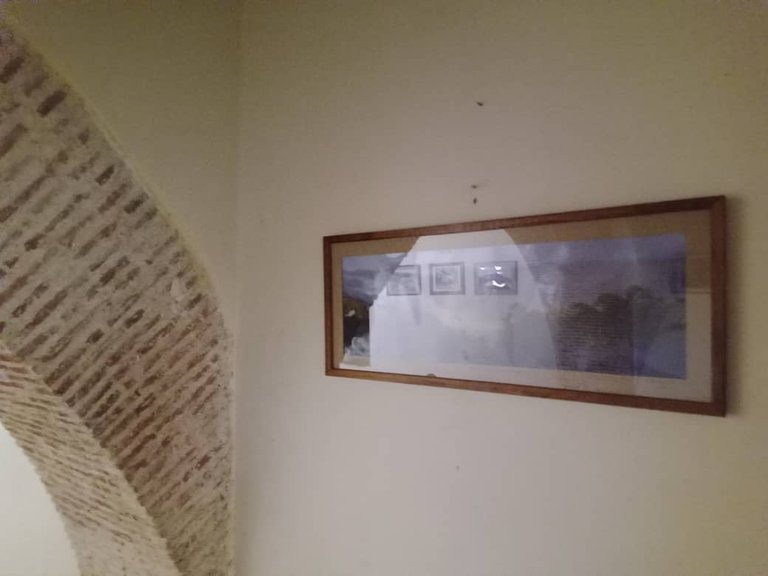
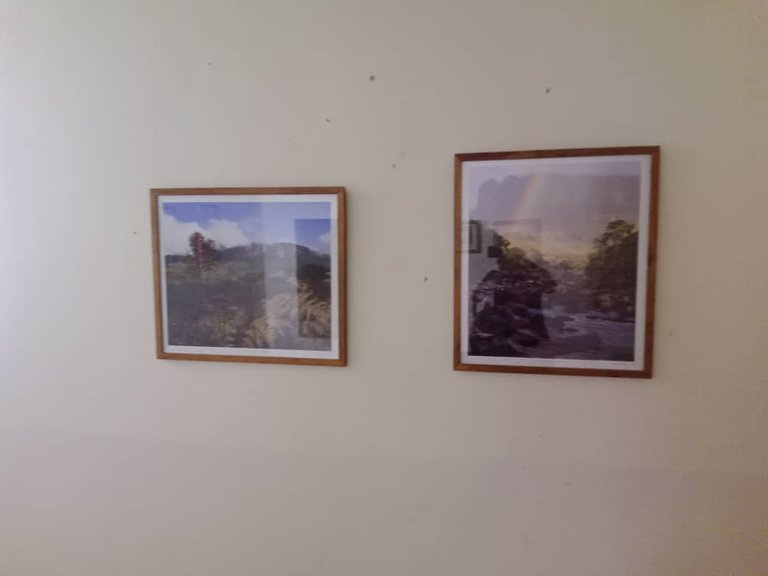
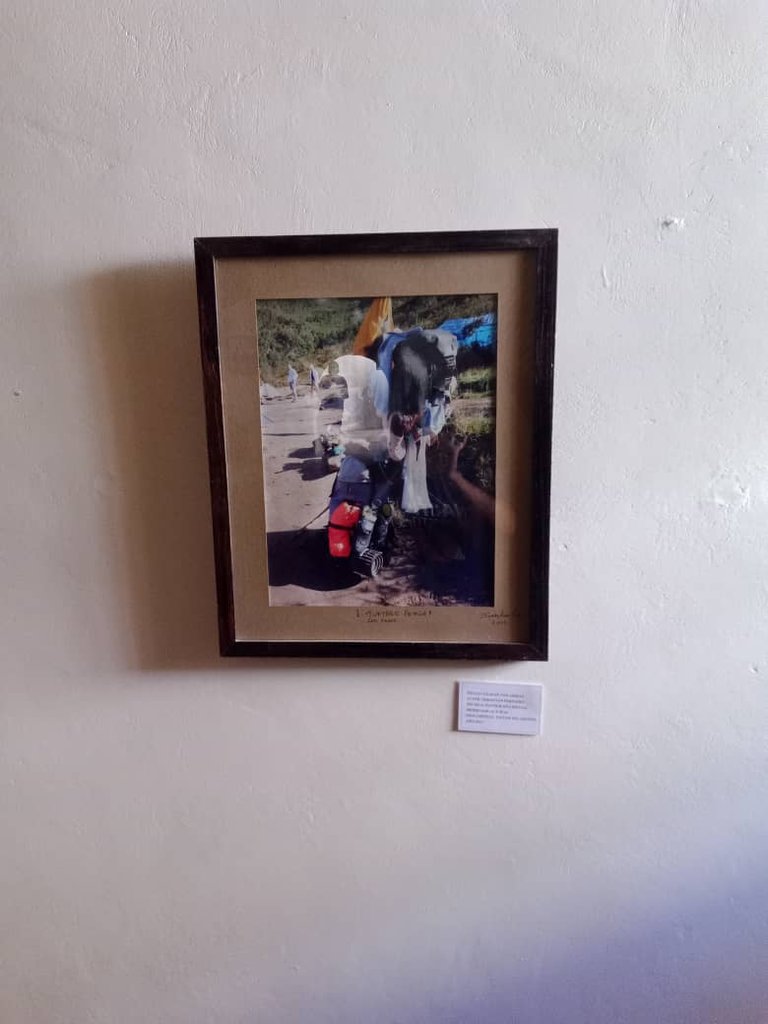
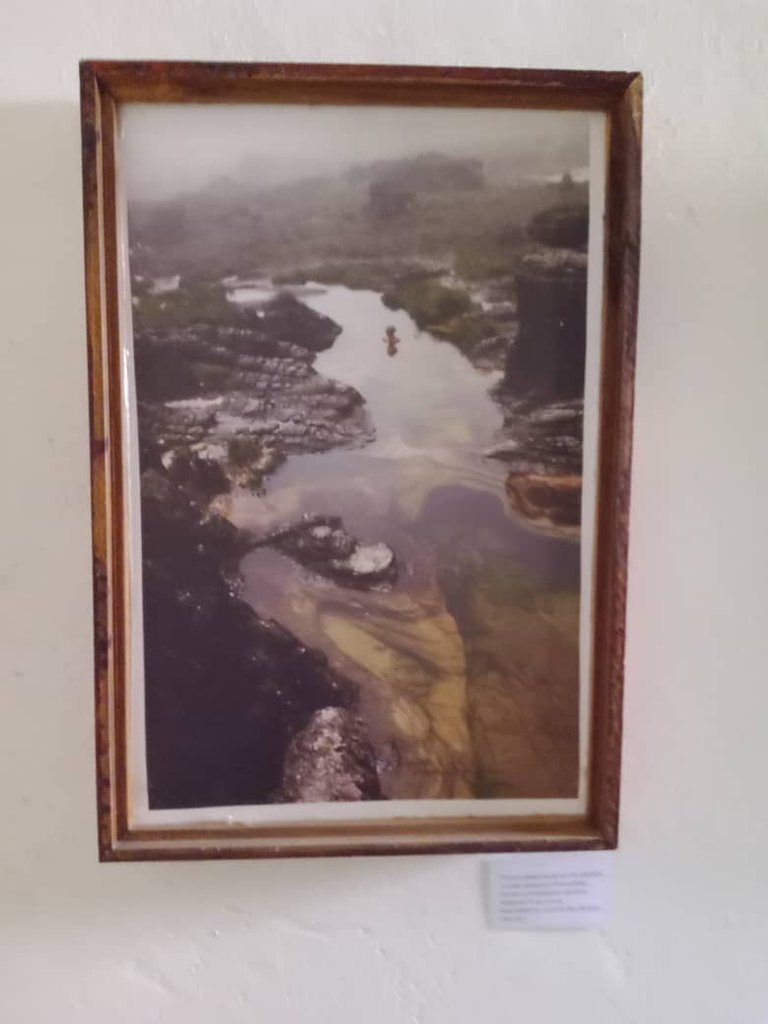
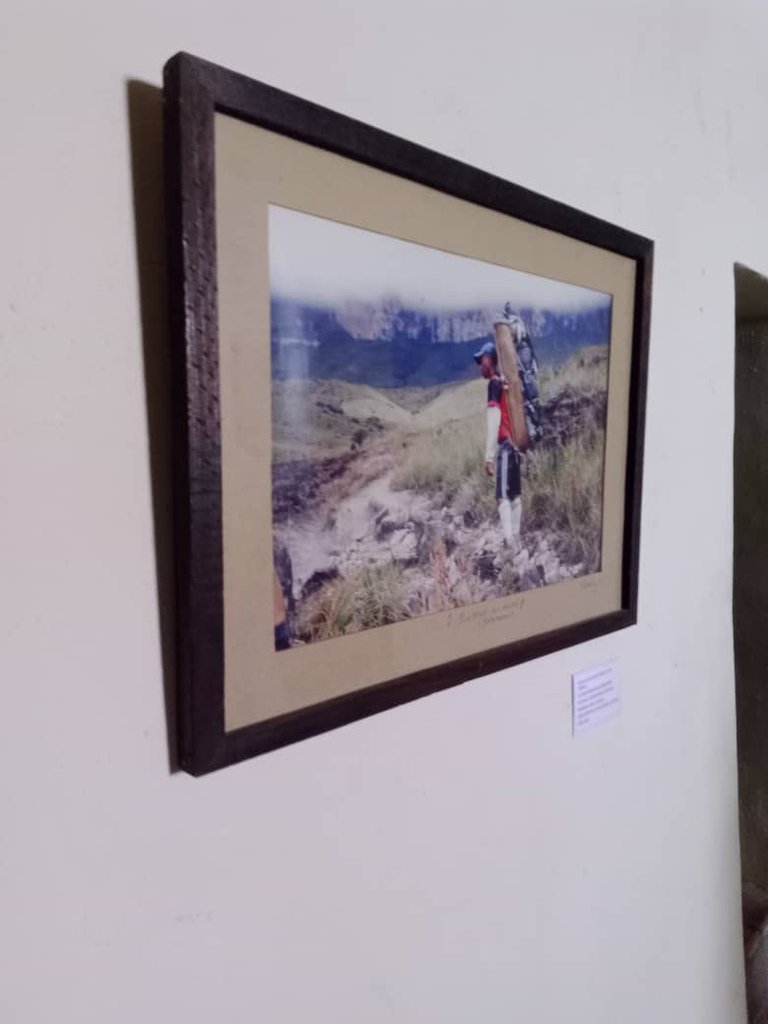
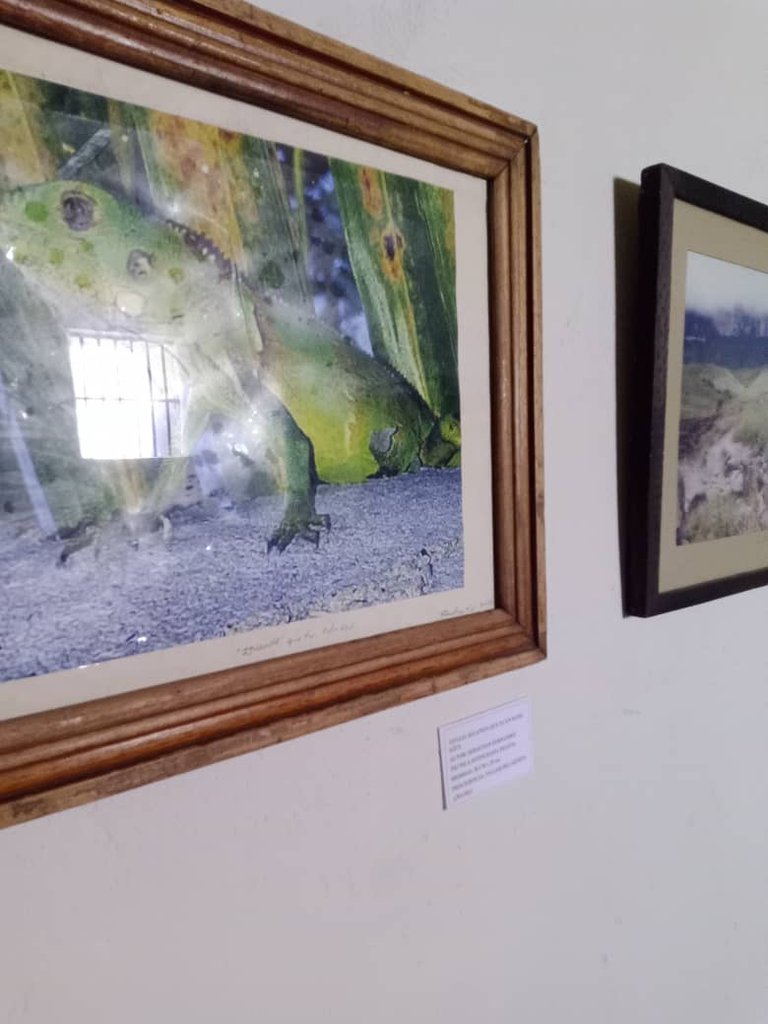
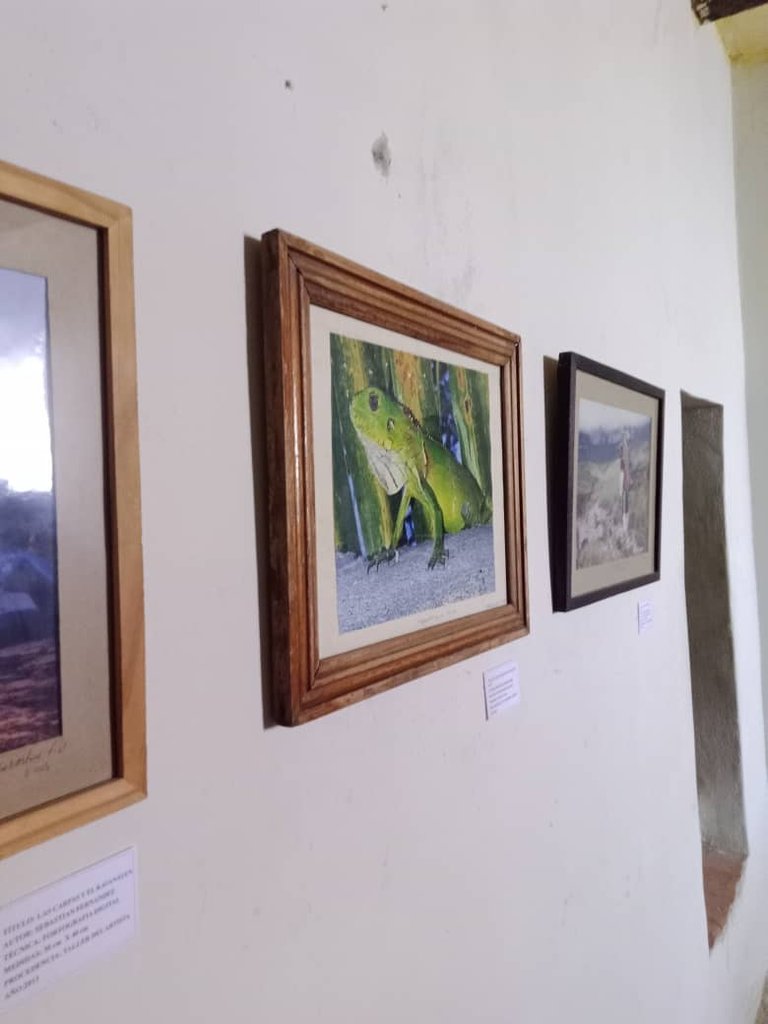
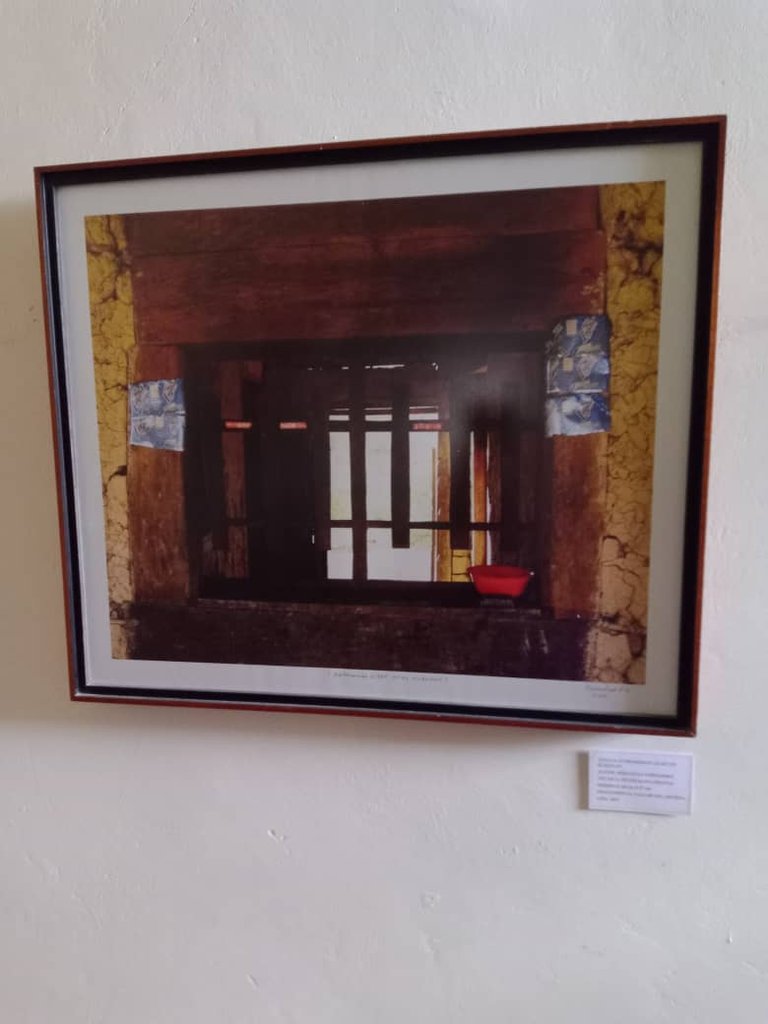
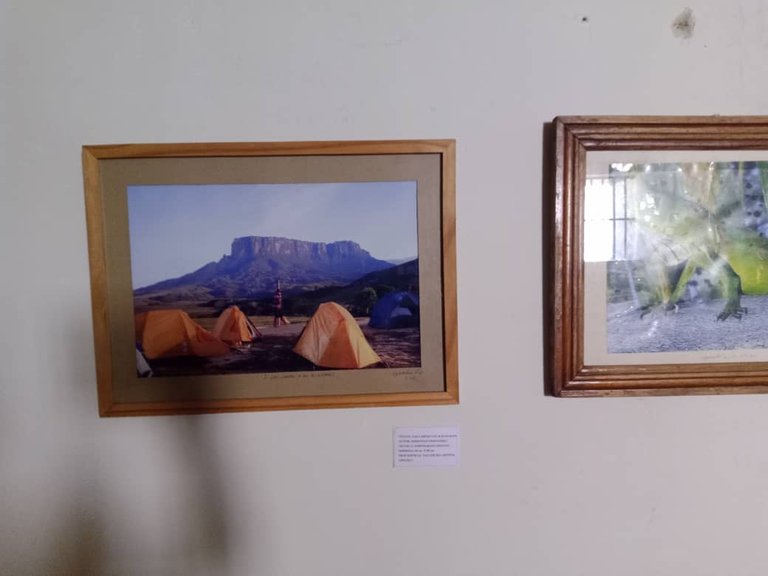
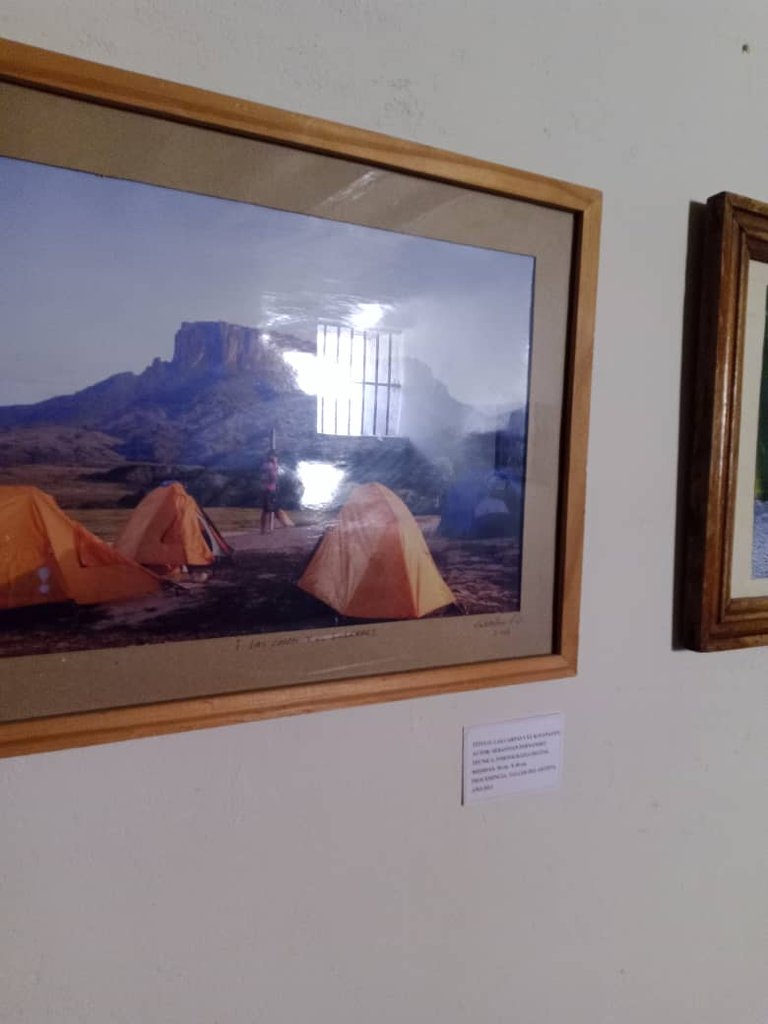
The arches have an approximate thickness of 30 centimeters, in these photographs you can see the brick and the white mixture, which unites these materials, we also observe in this space that the floor is similar to that of the ceiling of the prisons, it is covered with bricks or caico; On the right side we see the prison rooms, former President Páez was in one of them, it has little light, as it only receives sunlight through a small hole made in recent years, among the utensils of the time we have a press to make tobacco, a mortar made with limestone rocks, which they used to prepare food, crush and grind, a water filter (porous rock), a cannon on its wooden base and several photographs on the walls, it was a fun adventure to see this beautiful exhibition of photos and see some rudimentary utensils in the company of my son.
Los arcos tienen un grosor aproximado de 30 centímetros, en estas fotografías se puede observar el ladrillo y la mezcla de color blancao, que une estos materiales, también observamos en este espacio que el piso es similar al del techo de las prisiones, está cubierto de ladrillos o caico; en la parte derecha vemos las habitaciones de las prisiones, en una de ellas estuvo el expresidente Páez, tiene poca luz, pues solo recibe luz solar por un pequeño orificio hecho en años recientes, entre los utensilios de la época tenemos una prensa para elaborar tabaco, un mortero hecho con rocas calizas, que usaban para preparar los alimentos, triturar y moler, un filtro de agua (roca porosa), un cañon en su base de madera y varias fotografías en las paredes, fue una divertida aventura ver esta linda exhibición de fotos y conocer algunos utensilios rudimentarios en compañía de mi hijo.
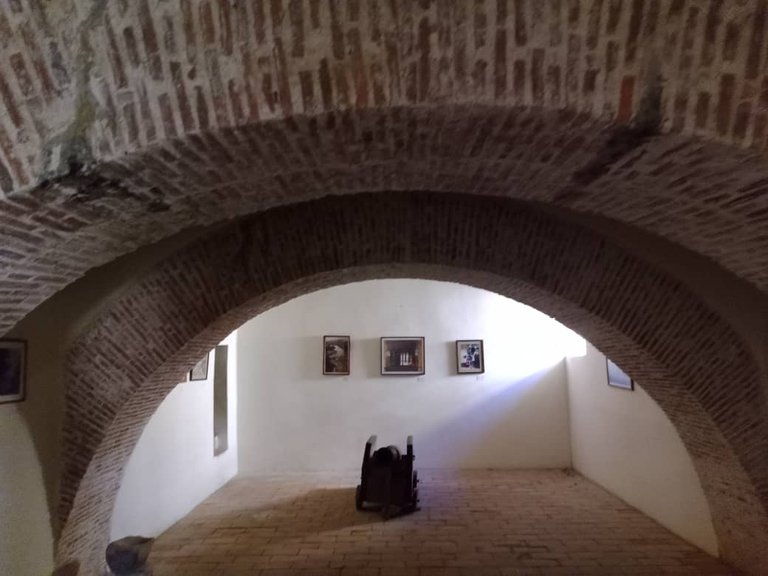
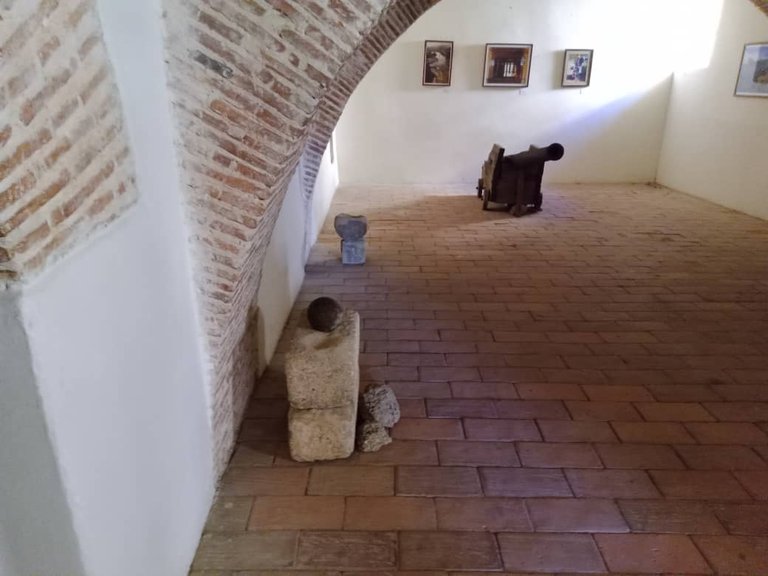
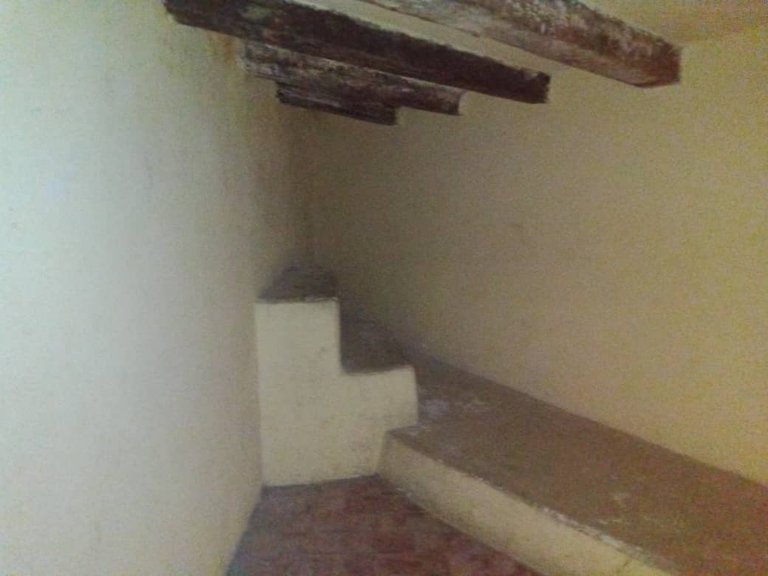
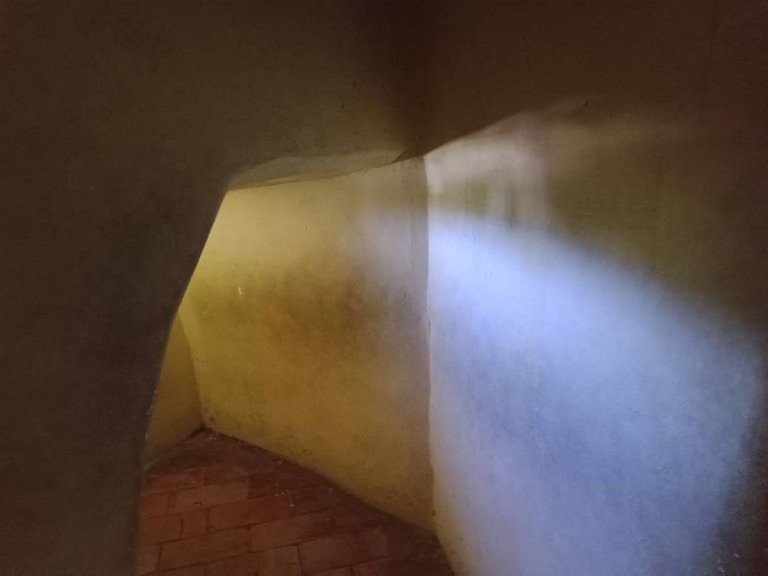
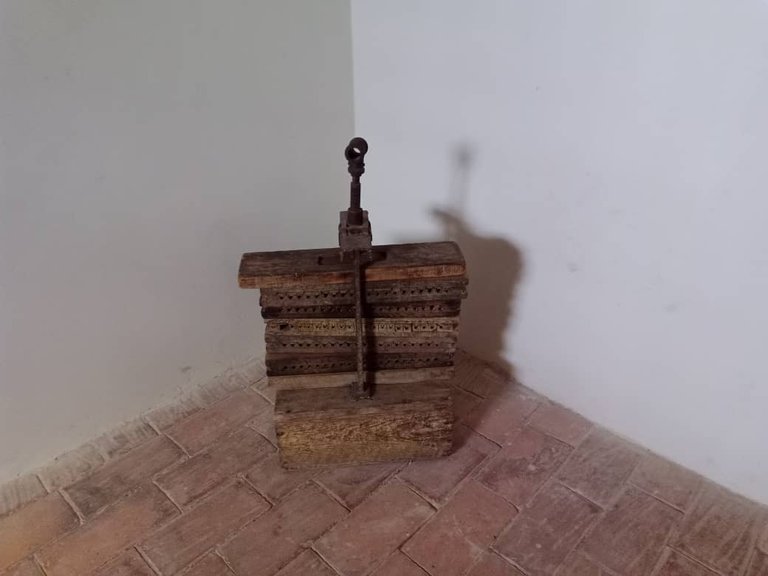
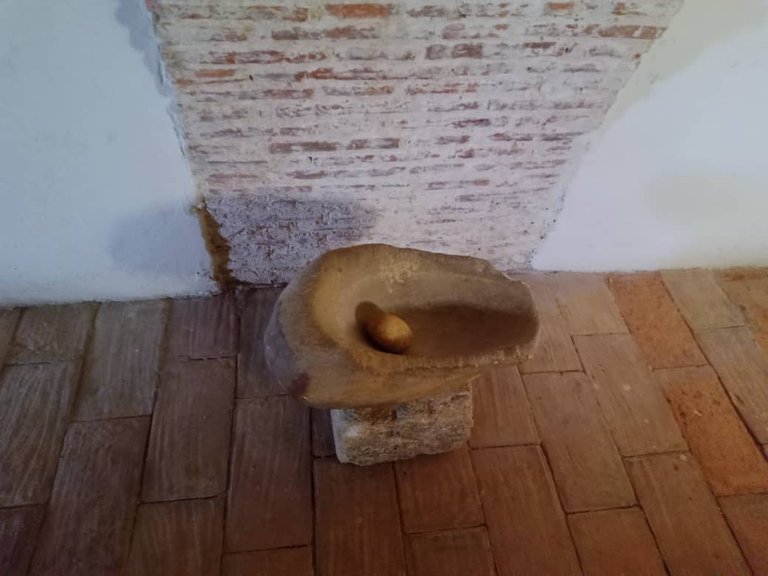
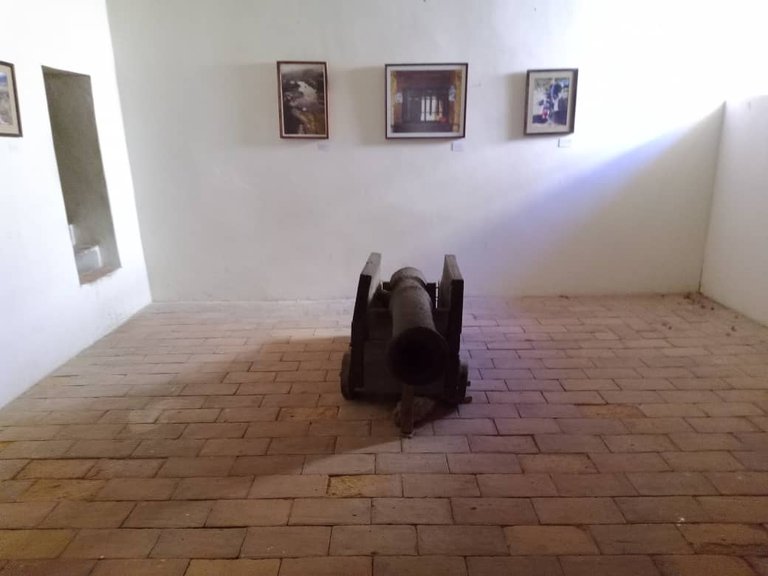

Blessings!

¡Bendiciones!

All images are my own.
Todas las imágenes son de mi autoría.
The prisons looks cool but scary at the same time your post it's like an historical explanation I love it.
Greetings @noemilunastorta, the internal arches have a great design, it's true, prisons are scary, it looks grim; currently they function as a small showroom for antique utensils and in certain seasons artwork by prominent artists in the area is exhibited.
Happy weekend!
You have successfully visited a very beautiful place 🙏♥️
Greetings @riyat, thanks for stopping by, the architecture of the castle is many years old and very well preserved, the photo exhibit is really beautiful.
Happy weekend!
Travel Digest #2462.
Become part of our travel community:
- Join our Discord
Hiya, @lauramica here, just swinging by to let you know that this post made it into our Honorable Mentions in Your post has been manually curated by the @worldmappin team. If you like what we're doing, please drop by to check out all the rest of today's great posts and consider supporting other authors like yourself and us so we can keep the project going!Hi @worldmappin and @lauramica, thanks for the support.
Regards!
Keep up the great work 💪
You can check out this post and your own profile on the map. Be part of the Worldmappin Community and join our Discord Channel to get in touch with other travelers, ask questions or just be updated on our latest features.
Gracias @worldmappin.
¡Con mucho gusto!
💪🗺️🐝
muy histórico cumana de cárcel a museo👏 bendiciones 🙏Excelente paseo @belkyscabrera
Hola amigo, el castillo es uno de los atractivos más visitados de la ciudad y ofrece una hermosa vista, los espacios que antiguamente sirvieron de prisiones hoy exhiben obras de arte.
Saludos!
¡Felicitaciones!
Estás participando para optar a la mención especial que se efectuará el domingo 9 de febrero del 2025 a las 8:00 pm (hora de Venezuela), gracias a la cual el autor del artículo seleccionado recibirá la cantidad de 1 HIVE transferida a su cuenta.
¡También has recibido 1 ENTROKEN! El token del PROYECTO ENTROPÍA impulsado por la plataforma Steem-Engine.
1. Invierte en el PROYECTO ENTROPÍA y recibe ganancias semanalmente. Entra aquí para más información.
2. Contáctanos en Discord: https://discord.gg/hkCjFeb
3. Suscríbete a nuestra COMUNIDADEntra aquí para más información sobre nuestro trail. y apoya al trail de @Entropia y así podrás ganar recompensas de curación de forma automática.
4. Visita nuestro canal de Youtube.
Atentamente
El equipo de curación del PROYECTO ENTROPÍA
Muchas gracias
Saludos!